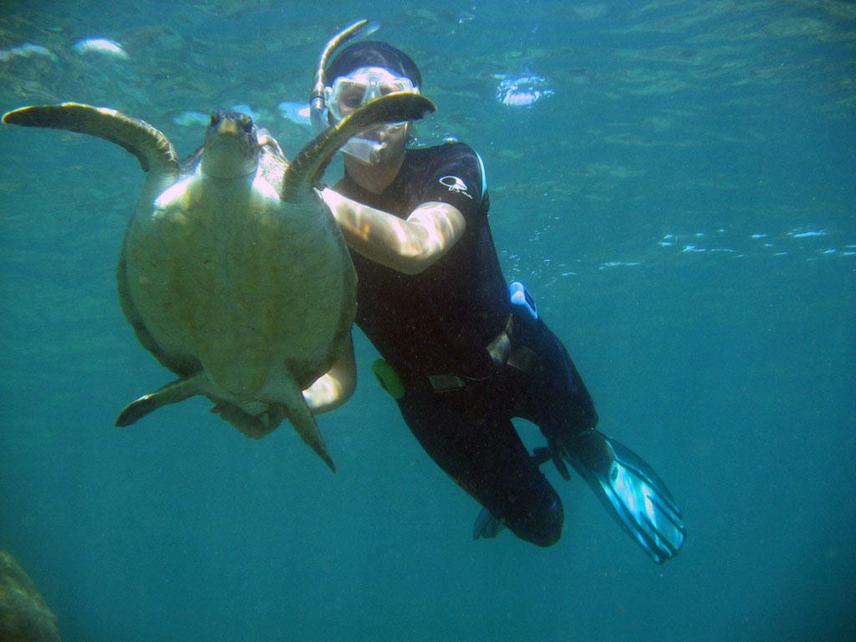Maíra Proietti
Other projects
11 Nov 2010
Genetic Diversity and Structure, Mixed Stock Analysis and Migratory Patterns of Hawksbill Turtles Feeding around Northeast Brazil
23 Oct 2014
Identification and Genetic Characterisation of Immature Hybrid Sea Turtles in Brazil
This project aims towards understanding the genetic characteristics, origins, and migratory patterns of green and hawksbill turtles in Southern Brazil.

In Brazil, the endangered green (Chelonia mydas) and hawksbill (Eretmochelys imbricata) utilize the extensive coastline for reproducing, foraging and developing. Reproduction is limited to the oceanic islands of Trindade, Atol das Rocas and Fernando de Noronha for the green turtle, and the state of Bahia for hawksbill turtles. However, foraging activities are not limited to the tropics, and occur also at higher latitudes. In Southern Brazil, the Arvoredo Marine Biological Reserve (27°17’S 048°22’W), a marine protected area covering 17800ha and four islands, and Cassino Beach (31°21’S 51°02’W to 33°44’S 53°22’W), a 220km-long sandy beach, are utilized by juvenile green and, at a lesser extent, hawksbill turtles for feeding, resting and developing.
These foraging areas are composed of aggregations of individuals born in various rookeries (“mixed stocks”), which may migrate thousands of kilometres between reproductive and foraging areas throughout an extremely complex life cycle of difficult direct studies. This difficulty in observing directly the biology of these reptiles has led to the creation of indirect study methods, such as molecular approaches, which reveal otherwise undetectable aspects of these animals. This project will utilize a molecular marker known as mitochondrial DNA (mtDNA) in order to understand the genetic structure and natal origins of these species. This project will also create hypotheses of the migratory patterns that these animals undergo from possible natal beaches to the study areas, based on data from major Atlantic Ocean currents. These hypotheses will corroborate and improve analyses of natal origins and migrations based solely on genetic aspects, in order to better comprehend the migrations of these animals.
Overall, our goal is to provide framework for management and conservation strategies for sea turtles in Southern Brazil, exchanging information with other programs in order to extend management strategies to probable migratory passages and natal beaches for effective conservation of these species.